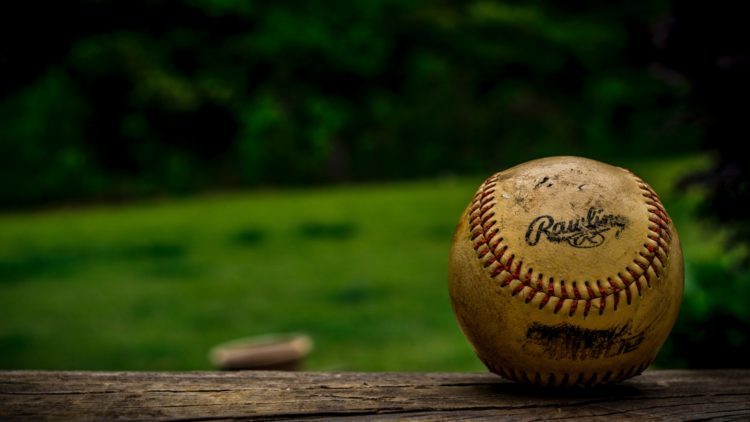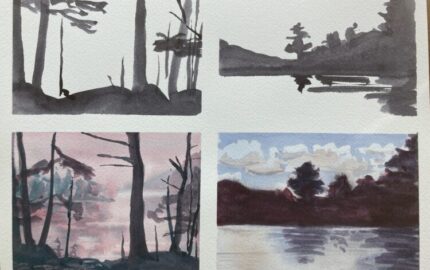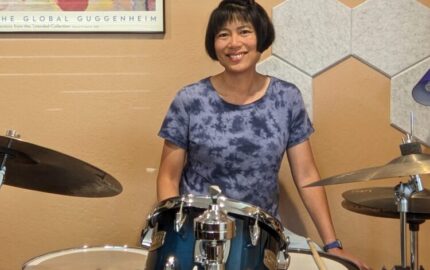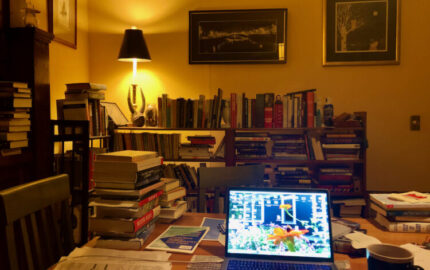I’ll go great lengths not to affect a story during the reporting process. Journalists are supposed to be the observer, not the actor, right? Our job is to witness and question a story — not to create or shape or unduly influence it.
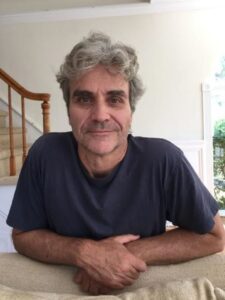 Well, let’s just say Tom Junod ignored those conventions at the end of his latest ESPN piece, “The Hero of Goodall Park.”
Well, let’s just say Tom Junod ignored those conventions at the end of his latest ESPN piece, “The Hero of Goodall Park.”
The story is about a horrific accident that played out two years ago on a Little League baseball field in Sanford, Maine. Douglas Parkhurst, 68, was struck and killed in a hit-and-run accident after a car burst onto the field during a game. Parkhust was hailed a hero for trying to protect the children — until days later, when a long-kept secret was exposed: Fifty years earlier, when Parkhurst was 18, he’d struck and killed a 4-year-old girl, Carolee Ashby, in Fulton, New York, in a hit-and-run. By the time police caught up with him years later, the statute of limitations had expired.
Junod chronicles this cosmic circle of pain, burden and fate across families and generations in a 15,000-word narrative that ends in surprising turn. Douglas Parkhurst III, referred to as D3 in the story, had texted Junod to tell him that he’d like to do something his grandfather never could: Apologize to the Ashby family, and close this circle once and for all.
Junod was stunned by the 19-year-old’s decision. In the course of reporting, he had grown close to Darlene Ashby, Carolee’s older sister who was with her on the night she died. So Junod passed along D3’s request: “Is this something that you would want?” And Darlene said yes.
But there was a problem. Junod writes:
Junod flew to Boston, rented a car, and picked up D3 in Sanford. They loaded up on goodies at a convenience store (“Any trip that I go on, I get Original SweeTARTS and Original Fritos,” Junod later told me.), and then the pair drove roughly eight hours to Fulton, where Darlene waited at a lake, resulting in a powerful ending that was coordinated, in part, by the journalist.
Junod had moved beyond the role of witness. He became a matchmaker.
I have long been an admirer of Junod's distinctive writing style. I read this ESPN piece twice, marveling at how he was able to craft real events into a Stephen King-esque tale. But both times, after reading the ending, I thought to myself: Wait a minute. Can you do that?
Rather than speculate and stew, I did the reporter thing: I called Junod to ask.
Years ago, as a rookie reporter at the Casper Star-Tribune, I wrote a slice-of-life profile about the volunteer pastor of a truck stop church in Wyoming. On Sunday mornings, Marvin, a slow moving 76-year-old who sported silky white hair and a homemade bolo tie, would hold 30-minute services from the truckers’ lounge next to Shower 1 and Shower 2.
His sermons normally drew a few people. But on the Sunday I reported the piece, nobody showed up.
Marvin was unperturbed. “I’ll just preach to you,” he said to me and the photographer I was partnered with. He opened his Bible to page 203 to begin his sermon — but I stopped him. I politely explained that no, he couldn’t preach to us, because then we would affect the story, and that would compromise our professional ethics.
“Pretend like we’re not here,” I said. Marvin looked at me, confused.
We all sat in an awkward silence for 30 minutes. Marvin clutched his handwritten notes for the day’s service, waiting for a trucker to walk in. And when no one did, he packed up his things and left.
That’s how my story ended.
Challenging journalistic convention has become a Tom Junod signature. He is one of the best in the biz at writing about himself, but also at bending the boundaries.
He wrote “The Hero of Goodall Park” over the course of two years. He finished a first draft last summer, then went on leave in advance of the Hollywood premiere of “A Beautiful Day in the Neighborhood.” — a feature film starring Tom Hanks, based on a profile of Rogers that Junod wrote for Esquire in 1998.
It was during this break that Junod received the text from D3. A few months later, the two were in a car, with Junod reporting — and steering — a new ending to his ESPN narrative.
Junod was gracious enough to field my questions when I called. I asked how he got onto Parkhurst's story, (“My wife gave me the idea.”), what the writing process was like (“The first draft was 30,000 words and an impressive act of overkill”), why that first draft was so long (“I got lost in the cosmic circle”) and how he fixed it (“I focused the story on four characters. Also, if you’re having trouble with a draft, restructure it as a mystery. I think any kind of writing can profit by that.”).
Then we got to the ending. I told him I thought it was a powerful narrative reveal. But the whole idea behind it — a reporter changing the course of the story — made me uncomfortable. Now it was Junod’s turn to be unperturbed.
“I think that journalists always affect a story like this, especially when you’re the center of crosstalk between the characters,” Junod said. “When you are the medium by which they are essentially communicating with each other at some sort of level, it’s pretty hard not to get involved. I just felt like I had opened Pandora’s box, and there was a person there who was basically saying, ‘I want to end this. And I want it to end in a good way.’ I mean, how do you not do that?”
I pushed a bit, asking if he had any ethical reservations. He told me then about a story he wrote for Esquire in 2015 called “The Death of Patient Zero.” It was about Stephanie Lee, a young woman with terminal colon cancer who didn’t have access to good medical care. Junod had connections to pioneering doctors who were looking for patients like Lee, so he put them in touch.
“And by the end of that story, my editor Mark (Warren) and I actually became Stephanie Lee’s health proxy. We made life-and-death decisions for her,” Junod said. “Once you do that, you’re not really worried too much about driving a guy to Fulton.”
“But has there ever been a point, maybe earlier in your career, where you wouldn’t drive D3 for fear of affecting the outcome of a story?” I asked.
“I’ve never subscribed to that,” Junod said. “I’ve never accepted that you have to somehow sacrifice your humanity in order to do journalism. Because I think of the journalistic transaction — person has story, writer listens to story and essentially takes hold of that story for the purpose of publication — to be a profoundly human one. How can that be something that you keep at arm’s length?”
In other words, Junod would never have said, “Pretend like I’m not here.”
I realize now I should have let Marvin preach at that truck stop back in Wyoming.
No, I hadn’t opened any dark Pandora’s box. Nor had I found myself in the center of crosstalk between two worlds. I had only met Marvin that day, and likely would never see him again. But the moment he said, “I’ll just preach to you,” I felt he thrust me into the story in ways I didn't belong.
In retrospect, I realize I still affected the storyline that day. But I think I chose the wrong way to do so. Listening to Marvin’s sermon not only would’ve been the human thing to do, it could have made for a much better ending. This rule I had clung to, about journalistic distance, isn’t black-or white. It’s more like a prism of colors that shift, a bit, with circumstances. Just our presence on a scene affects things; from there, it’s a matter of standing on a firm foundation of professional ethics, but making decisions that fit the situation.
As for Junod, after eight hours of driving and polishing off his bags of Fritos and SweeTARTS, he arrived with D3 at the lake, where Darlene sat on a bench in the distance. Junod writes:
And then Junod did the more conventional thing: He sat back and observed. He said it’s one of the most memorable images of his journalistic career, watching this apology, 50 years in the making, unfold from afar. He told me he’s not a praying man, but in that moment, he said a prayer to Fred Rogers. The movie had just premiered and he had been traveling with Rogers' widow to promote it.
Rogers and Junod had kept in touch, often through letters, since the original 1998 Esquire profile. Junod was a primary voice in the 2018 documentary about Rogers, "Won’t You Be My Neighbor.” In late 2019, he wrote "My Friend Mister Rogers" for The Atlantic, examining the meaning of Rogers to the world — and to him.
Through it all, Junod said, he had questioned that emotional connection. Why was Rogers such a constant presence in his life?
“And when D3 went to talk to Darlene, I was like, ‘OK, I get it, you were in my life for this,’” Junod told me. “Because I didn’t resist the human aspects of the story. And I thought that was significant at least to me, and I think, ultimately, to them.”
Brendan Meyer is a freelance writer based in Chicago. His work has appeared in ESPN, Outside Magazine and Bleacher Report. He previously worked as a features writer at The Dallas Morning News and the Casper (Wyoming) Star-Tribune.
“The Architect of Desire,” by Suzannah Lessard (1996). A descendant of Golden Age architect Sanford White writes how the scandal of his death — which gave E.L. Doctorow the occasion for “Ragtime” — wound its snakelike way through the history of her family.
“The Hare with Amber Eyes,” by Edmund de Waal (2010): de Waal’s contemplation of a priceless family heirloom — the cabinet of tiny Japanese ceramic figurines called netsuke — becomes a contemplation of the Holocaust, along with what we stand to lose in the twists and turns of history and what we get to keep, written in prose of Sebaldian elegance.
“Negroland,” by Margo Jefferson (2015). Jefferson is a cultural critic by trade, and the fond but clear-eyed remove she brings to her account of growing up as a member of “the black elite” in the 1950s and 60s makes the emotional revelations of the ’70s all the more devastating: “And then black boys began to die.”
“After Visiting Friends,” by Michael Hainey (2013). Hainey’s father, a Chicago journalist, died when he was a young boy, under circumstances not only “mysterious” but falsified by the very people he counted on to tell him the truth. I either owe or blame this book big time: Hainey decision to find out what really happened — and his skill at shaping a narrative from the slow drip of revelation — launched my own efforts to write about my father.
“The Light Years,” by Chris Rush (2019). A young teen is kicked out of his New Jersey home for being gay, and then (barely) survives the rest of his adolescence by selling and ingesting massive amounts of “sacrament” — LSD. Written in a voice as mind-bending as its subject matter, “The Light Years” is, of all the books on this list, the one whose relative obscurity is most puzzling to me. It is as much an American classic as Mary Karr’s "Liar’s Club,” with an irresistibly-lysergic Huck Finn at the center.
 Well, let’s just say Tom Junod ignored those conventions at the end of his latest ESPN piece, “The Hero of Goodall Park.”
Well, let’s just say Tom Junod ignored those conventions at the end of his latest ESPN piece, “The Hero of Goodall Park.”The story is about a horrific accident that played out two years ago on a Little League baseball field in Sanford, Maine. Douglas Parkhurst, 68, was struck and killed in a hit-and-run accident after a car burst onto the field during a game. Parkhust was hailed a hero for trying to protect the children — until days later, when a long-kept secret was exposed: Fifty years earlier, when Parkhurst was 18, he’d struck and killed a 4-year-old girl, Carolee Ashby, in Fulton, New York, in a hit-and-run. By the time police caught up with him years later, the statute of limitations had expired.
Junod chronicles this cosmic circle of pain, burden and fate across families and generations in a 15,000-word narrative that ends in surprising turn. Douglas Parkhurst III, referred to as D3 in the story, had texted Junod to tell him that he’d like to do something his grandfather never could: Apologize to the Ashby family, and close this circle once and for all.
Junod was stunned by the 19-year-old’s decision. In the course of reporting, he had grown close to Darlene Ashby, Carolee’s older sister who was with her on the night she died. So Junod passed along D3’s request: “Is this something that you would want?” And Darlene said yes.
But there was a problem. Junod writes:
D3 had neither car nor license, and so if he was ever to apologize to Darlene, he needed help. I decided to give it to him, because, well, I was part of it now, and I agreed with my passenger — we have to close it.
Junod flew to Boston, rented a car, and picked up D3 in Sanford. They loaded up on goodies at a convenience store (“Any trip that I go on, I get Original SweeTARTS and Original Fritos,” Junod later told me.), and then the pair drove roughly eight hours to Fulton, where Darlene waited at a lake, resulting in a powerful ending that was coordinated, in part, by the journalist.
Junod had moved beyond the role of witness. He became a matchmaker.
I have long been an admirer of Junod's distinctive writing style. I read this ESPN piece twice, marveling at how he was able to craft real events into a Stephen King-esque tale. But both times, after reading the ending, I thought to myself: Wait a minute. Can you do that?
Rather than speculate and stew, I did the reporter thing: I called Junod to ask.
Pretending we're not there when we are
Years ago, as a rookie reporter at the Casper Star-Tribune, I wrote a slice-of-life profile about the volunteer pastor of a truck stop church in Wyoming. On Sunday mornings, Marvin, a slow moving 76-year-old who sported silky white hair and a homemade bolo tie, would hold 30-minute services from the truckers’ lounge next to Shower 1 and Shower 2.
His sermons normally drew a few people. But on the Sunday I reported the piece, nobody showed up.
Marvin was unperturbed. “I’ll just preach to you,” he said to me and the photographer I was partnered with. He opened his Bible to page 203 to begin his sermon — but I stopped him. I politely explained that no, he couldn’t preach to us, because then we would affect the story, and that would compromise our professional ethics.
“Pretend like we’re not here,” I said. Marvin looked at me, confused.
We all sat in an awkward silence for 30 minutes. Marvin clutched his handwritten notes for the day’s service, waiting for a trucker to walk in. And when no one did, he packed up his things and left.
That’s how my story ended.
When journalistic decisions are human decisions
Challenging journalistic convention has become a Tom Junod signature. He is one of the best in the biz at writing about himself, but also at bending the boundaries.
He wrote “The Hero of Goodall Park” over the course of two years. He finished a first draft last summer, then went on leave in advance of the Hollywood premiere of “A Beautiful Day in the Neighborhood.” — a feature film starring Tom Hanks, based on a profile of Rogers that Junod wrote for Esquire in 1998.
It was during this break that Junod received the text from D3. A few months later, the two were in a car, with Junod reporting — and steering — a new ending to his ESPN narrative.
Junod was gracious enough to field my questions when I called. I asked how he got onto Parkhurst's story, (“My wife gave me the idea.”), what the writing process was like (“The first draft was 30,000 words and an impressive act of overkill”), why that first draft was so long (“I got lost in the cosmic circle”) and how he fixed it (“I focused the story on four characters. Also, if you’re having trouble with a draft, restructure it as a mystery. I think any kind of writing can profit by that.”).
Then we got to the ending. I told him I thought it was a powerful narrative reveal. But the whole idea behind it — a reporter changing the course of the story — made me uncomfortable. Now it was Junod’s turn to be unperturbed.
“I think that journalists always affect a story like this, especially when you’re the center of crosstalk between the characters,” Junod said. “When you are the medium by which they are essentially communicating with each other at some sort of level, it’s pretty hard not to get involved. I just felt like I had opened Pandora’s box, and there was a person there who was basically saying, ‘I want to end this. And I want it to end in a good way.’ I mean, how do you not do that?”
I pushed a bit, asking if he had any ethical reservations. He told me then about a story he wrote for Esquire in 2015 called “The Death of Patient Zero.” It was about Stephanie Lee, a young woman with terminal colon cancer who didn’t have access to good medical care. Junod had connections to pioneering doctors who were looking for patients like Lee, so he put them in touch.
“And by the end of that story, my editor Mark (Warren) and I actually became Stephanie Lee’s health proxy. We made life-and-death decisions for her,” Junod said. “Once you do that, you’re not really worried too much about driving a guy to Fulton.”
“But has there ever been a point, maybe earlier in your career, where you wouldn’t drive D3 for fear of affecting the outcome of a story?” I asked.
“I’ve never subscribed to that,” Junod said. “I’ve never accepted that you have to somehow sacrifice your humanity in order to do journalism. Because I think of the journalistic transaction — person has story, writer listens to story and essentially takes hold of that story for the purpose of publication — to be a profoundly human one. How can that be something that you keep at arm’s length?”
In other words, Junod would never have said, “Pretend like I’m not here.”
Beyond black-and-white boundaries
I realize now I should have let Marvin preach at that truck stop back in Wyoming.
No, I hadn’t opened any dark Pandora’s box. Nor had I found myself in the center of crosstalk between two worlds. I had only met Marvin that day, and likely would never see him again. But the moment he said, “I’ll just preach to you,” I felt he thrust me into the story in ways I didn't belong.
In retrospect, I realize I still affected the storyline that day. But I think I chose the wrong way to do so. Listening to Marvin’s sermon not only would’ve been the human thing to do, it could have made for a much better ending. This rule I had clung to, about journalistic distance, isn’t black-or white. It’s more like a prism of colors that shift, a bit, with circumstances. Just our presence on a scene affects things; from there, it’s a matter of standing on a firm foundation of professional ethics, but making decisions that fit the situation.
As for Junod, after eight hours of driving and polishing off his bags of Fritos and SweeTARTS, he arrived with D3 at the lake, where Darlene sat on a bench in the distance. Junod writes:
He opens up the passenger door and comes around to my window. "Are you sure?" he asks.
"I'm sure," I say. I've decided not to go with him. I've decided that he needs to be alone with her.
"You can, you know."
"I know. But it's your thing. Good luck.”
And then Junod did the more conventional thing: He sat back and observed. He said it’s one of the most memorable images of his journalistic career, watching this apology, 50 years in the making, unfold from afar. He told me he’s not a praying man, but in that moment, he said a prayer to Fred Rogers. The movie had just premiered and he had been traveling with Rogers' widow to promote it.
Rogers and Junod had kept in touch, often through letters, since the original 1998 Esquire profile. Junod was a primary voice in the 2018 documentary about Rogers, "Won’t You Be My Neighbor.” In late 2019, he wrote "My Friend Mister Rogers" for The Atlantic, examining the meaning of Rogers to the world — and to him.
Through it all, Junod said, he had questioned that emotional connection. Why was Rogers such a constant presence in his life?
“And when D3 went to talk to Darlene, I was like, ‘OK, I get it, you were in my life for this,’” Junod told me. “Because I didn’t resist the human aspects of the story. And I thought that was significant at least to me, and I think, ultimately, to them.”
Brendan Meyer is a freelance writer based in Chicago. His work has appeared in ESPN, Outside Magazine and Bleacher Report. He previously worked as a features writer at The Dallas Morning News and the Casper (Wyoming) Star-Tribune.
BONUS: Some recommended reading from Tom Junod
“The Architect of Desire,” by Suzannah Lessard (1996). A descendant of Golden Age architect Sanford White writes how the scandal of his death — which gave E.L. Doctorow the occasion for “Ragtime” — wound its snakelike way through the history of her family.
“The Hare with Amber Eyes,” by Edmund de Waal (2010): de Waal’s contemplation of a priceless family heirloom — the cabinet of tiny Japanese ceramic figurines called netsuke — becomes a contemplation of the Holocaust, along with what we stand to lose in the twists and turns of history and what we get to keep, written in prose of Sebaldian elegance.
“Negroland,” by Margo Jefferson (2015). Jefferson is a cultural critic by trade, and the fond but clear-eyed remove she brings to her account of growing up as a member of “the black elite” in the 1950s and 60s makes the emotional revelations of the ’70s all the more devastating: “And then black boys began to die.”
“After Visiting Friends,” by Michael Hainey (2013). Hainey’s father, a Chicago journalist, died when he was a young boy, under circumstances not only “mysterious” but falsified by the very people he counted on to tell him the truth. I either owe or blame this book big time: Hainey decision to find out what really happened — and his skill at shaping a narrative from the slow drip of revelation — launched my own efforts to write about my father.
“The Light Years,” by Chris Rush (2019). A young teen is kicked out of his New Jersey home for being gay, and then (barely) survives the rest of his adolescence by selling and ingesting massive amounts of “sacrament” — LSD. Written in a voice as mind-bending as its subject matter, “The Light Years” is, of all the books on this list, the one whose relative obscurity is most puzzling to me. It is as much an American classic as Mary Karr’s "Liar’s Club,” with an irresistibly-lysergic Huck Finn at the center.
